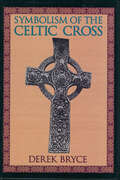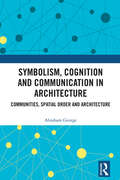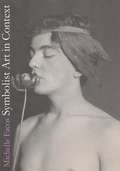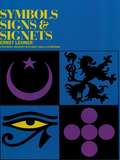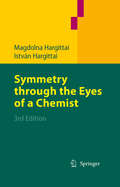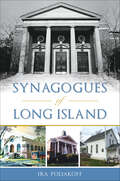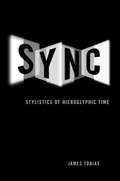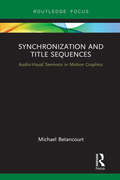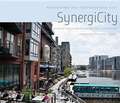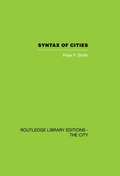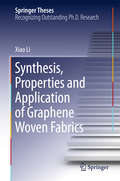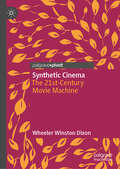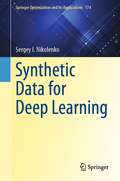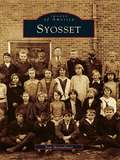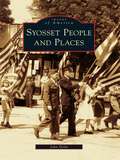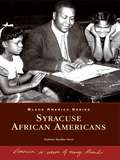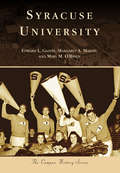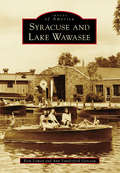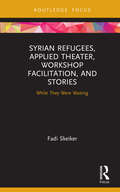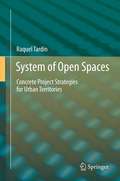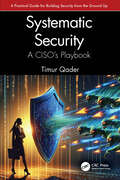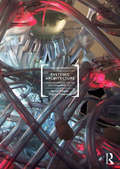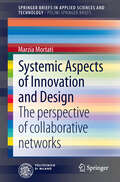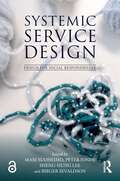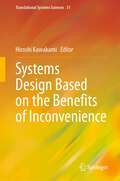- Table View
- List View
Symbolism of the Celtic Cross
by Derek BryceA guide to the basic symbolism of the Celtic Cross, featuring rare illustrations.Did you know that the basic symbolism of the cross is that of the world axis, or the link between Heaven and Earth? Or that the main feature of the ornamented Celtic Cross, the wheel cross, is not derived from the crucifixion, but from a more ancient symbol the Chi-Rho monogram, which is the name of Christ in the Greek alphabet?In Symbolism of the Celtic Cross, Derek Bryce traces the pagan-Christian link of the essential symbolism of the axis mundi from standing stones and market crosses (at crossroads and not always “crosses” in form) to the inscribed slabs and freestanding crosses of the Celtic-Christian era. He includes rare illustrations of ornamental Celtic Crosses from such places as Brittany, Wales, Scotland, the Isle of Man, Cumbria, Ireland, and Cornwall. Bryce explores esoteric aspects of the symbolism, alchemy, and the wisdom of Hermes.
Symbolism, Cognition and Communication in Architecture: Communities, Spatial Order and Architecture
by Abraham GeorgeThis book discusses the role and significance of symbols and symbolism in graphical communication toward the establishment of meaningful architecture. It explores how these are effectively applied in architectural education for the empowerment of learners in various cultures around the world. The volume examines the developments in graphic representations while recognizing the importance of cognition and its perception in spatial terms. In a scenario where architectural education is at crossroads, facing challenges of a global nature, this book highlights the importance of understanding architectural curriculum and design subjects. The author discusses the issues of communicating the knowledge of architecture to heterogeneous groups of students and explains how design fields and learning in architecture can be modified through cognitive instructional methods. The book outlines the methodology to develop symbols and symbolic pedagogical tools for effective communication in architecture. The book will appeal to students, researchers, teachers and scholars of architecture, design, planning and visual communication. It will also be of interest to architects, artists, spatial designers, town planners, urban planners and professionals.
Symbolist Art in Context
by Michelle FacosThis book offers a straightforward definition of Symbolism as the starting point for investigating a complex and imprecisely understood art movement based on two factors: authorial intention and aesthetic qualities.
Symbols, Signs and Signets
by Ernst LehnerReproducing in historical sequence 1355 signs, seals, and symbols from the simplest drawings of heavenly bodies, through the intricate heraldic devices of the Middle Ages, to modern cattle brands and hobo sign language, this book will be of immense value to the commercial artist and designer. The development of man as an artist and designer is here recorded pictorially by one of the world's foremost experts in the field of graphic art, Ernst Lehner.This book is divided into 13 sections, each with a separate brief introduction: Symbolic Gods and Deities (Egyptian, Babylonian, Greek, Germanic, Incan, Aztec, Hindu, Buddhist, Taoist, etc.); Astronomy and Astrology; Alchemy, Magic, and Mystic (Nordic runes, magic circles, etc.); Church and Religion; Heraldry (coats of arms, badges, etc.); Monsters and Imaginary Figures; Japanese Crests; Marks and Signets (engravers, goldsmiths, armorers, stonemasons, etc.); Watermarks (fourteenth-eighteenth centuries); Printer's Marks (fifteenth-seventeenth centuries); Cattle Brands; and Hobo Signs. All the signs, symbols, and signets are pictured in black and white on strikingly laid out pages, with full explanatory notes for both lay readers and specialists.Anyone interested in means of communication other than language will find this book fascinating and authoritative. The student and teacher in the graphic arts will find it a practical visual guide through the transformation of simple marks and signs into the complicated emblems of our time.
Symmetry through the Eyes of a Chemist
by Istvan Hargittai Magdolna HargittaiThis is the first book to comprehensively survey chemistry from the point of view of symmetry. It contains many examples from chemistry as well as from other fields which emphasize the unifying nature of the symmetry concept.
Synagogues of Long Island (Landmarks)
by Ira PoliakoffLong Island has one of the most vibrant and largest Jewish communities in the nation.After World War II, hundreds of thousands of Jewish soldiers returned from war looking for a life in the suburbs and synagogues to join, but the demand exceeded the supply. In 1946, Rabbi Elias Solomon called a meeting of Conservative rabbis from Manhattan to map out a plan to build a synagogue at ever South Shore Long Island Railroad stop, from Valley Stream to Patchogue. Central Synagogue of Nassau County and Beth El in Great Neck both grew to more than 1000 families as Reform Judaism took hold, and the growth of the Chabad movement in recent decades as spurred an increase of Orthodox Judaism. Author Ira Poliakoff catalogues the history of synagogues and congregations that have shaped Long Island's past and present.
Sync: Stylistics of Hieroglyphic Time
by James TobiasIn Sync, James Tobias examines the development of musical sound and image in cinema and media art, indicating how these elements define the nature and experience of reception. Placing musicality at the center of understanding streaming media, Tobias presents six interwoven stories about synchronized audiovisual media—from filmmaker Sergei Eisenstein’s Alexander Nevskyto today’s contemporary digital art and computer games—to show how these effects are never merely "musical" in the literal sense of organized sound.
Synchronization and Title Sequences: Audio-Visual Semiosis in Motion Graphics (Routledge Studies in Media Theory and Practice)
by Michael BetancourtSynchronization and Title Sequences proposes a semiotic analysis of the synchronization of image and sound in motion pictures using title sequences. Through detailed historical close readings of title designs that use either voice-over, an instrumental opening, or title song to organize their visuals—from Vertigo (1958) to The Player (1990) and X-Men: First Class (2011)—author Michael Betancourt develops a foundational framework for the critique and discussion of motion graphics’ use of synchronization and sound, as well as a theoretical description of how sound-image relationships develop on-screen.
SynergiCity: Reinventing the Postindustrial City
by Richard Florida Paul J. Armstrong Paul Hardin KappSynergiCity: Reinventing the Postindustrial City proposes a new and invigorating vision of urbanism, architectural design, and urban revitalization in twenty-first-century America. Culling transformative ideas from the realms of historic preservation, sustainability, ecological urbanism, and the innovation economy, Paul Hardin Kapp and Paul J. Armstrong present a holistic vision for restoring industrial cities suffering from population decline back into stimulating and productive places to live and work. With a particular emphasis on the Rust Belt of the American Midwest, SynergiCity argues that cities such as Detroit, St. Louis, and Peoria must redefine themselves to be globally competitive. This revitalization is possible through environmentally and economically sustainable restoration of industrial areas and warehouse districts for commercial, research, light industrial, and residential uses. The volume's expert researchers, urban planners, and architects draw on the redevelopment successes of other major cities--such as the American Tobacco District in Durham, North Carolina, and the Milwaukee River Greenway--to set guidelines and goals for reinventing and revitalizing the postindustrial landscape. Contributors are Paul J. Armstrong, Donald K. Carter, Lynne M. Dearborn, Norman W. Garrick, Mark L. Gillem, Robert Greenstreet, Craig Harlan Hullinger, Paul Hardin Kapp, Ray Lees, Emil Malizia, John O. Norquist, Christine Scott Thomson, and James H. Wasley.
Synthesis, Properties and Application of Graphene Woven Fabrics
by Xiao LiThis thesis reports on innovations in the design and direct synthesis of graphene-based woven fabric (GWF) and multi-layer graphene/porous carbon woven fabric films (MLG/PC) by means of chemical vapor deposition (CVD), using woven copper mesh and nickel mesh as the template. Further, it presents the successful applications of these materials as a platform for solar cells, super capacitors and sensors, making it especially of interest to researchers and graduate students in the fields of materials sciences, nanotechnology and renewable energy.
Synthetic Cinema: The 21st-Century Movie Machine
by Wheeler Winston DixonIn this book, Wheeler Winston Dixon argues that 21st-century mainstream filmmaking is increasingly and troublingly dominated by "synthetic cinema." He details how movies over the last two decades have fundamentally abandoned traditional filmmaking values through the overwhelming use of computer generated imagery, digital touch ups for the actors, and extensive use of green screen technology that replace sets and location shooting. Combined with the shift to digital cinematography, as well as the rise of comic book and franchise cinema, the temptation to augment movies with lavish, computer generated spectacle has proven irresistible to both directors and audiences, to the point that, Dixon argues, 21st-century commercial cinema is so far removed from the real world that it has created a new era of flawless, fake movies.
Synthetic Data for Deep Learning (Springer Optimization and Its Applications #174)
by Sergey I. NikolenkoThis is the first book on synthetic data for deep learning, and its breadth of coverage may render this book as the default reference on synthetic data for years to come. The book can also serve as an introduction to several other important subfields of machine learning that are seldom touched upon in other books. Machine learning as a discipline would not be possible without the inner workings of optimization at hand. The book includes the necessary sinews of optimization though the crux of the discussion centers on the increasingly popular tool for training deep learning models, namely synthetic data. It is expected that the field of synthetic data will undergo exponential growth in the near future. This book serves as a comprehensive survey of the field. In the simplest case, synthetic data refers to computer-generated graphics used to train computer vision models. There are many more facets of synthetic data to consider. In the section on basic computer vision, the book discusses fundamental computer vision problems, both low-level (e.g., optical flow estimation) and high-level (e.g., object detection and semantic segmentation), synthetic environments and datasets for outdoor and urban scenes (autonomous driving), indoor scenes (indoor navigation), aerial navigation, and simulation environments for robotics. Additionally, it touches upon applications of synthetic data outside computer vision (in neural programming, bioinformatics, NLP, and more). It also surveys the work on improving synthetic data development and alternative ways to produce it such as GANs. The book introduces and reviews several different approaches to synthetic data in various domains of machine learning, most notably the following fields: domain adaptation for making synthetic data more realistic and/or adapting the models to be trained on synthetic data and differential privacy for generating synthetic data with privacy guarantees. This discussion is accompanied by an introduction into generative adversarial networks (GAN) and an introduction to differential privacy.
Syosset (Images of America)
by Tom MontalbanoA bustling suburb that hosts a wide array of businesses and retail shops, a top-rated school system, and a largely affluent, ethnically diverse population, Syosset has become one of Long Island's most desirable places to live. Yet, as the years have passed, much of the community's early history has been lost. Syosset uses rare photographs, diaries, historical documents, and interviews to uncover fascinating information about the Syosset-Woodbury area's past, from its humble beginning in 1648 to its transformation into a booming residential suburb in the 1950s. For example, did you know that Native Americans once hunted in the area of Humphrey Drive or that the British army had an encampment in Syosset during the American Revolution? Can you guess when the Long Island Rail Road first chugged through Syosset? (Hint: Soldiers rode the train out of Syosset on their way to fight in the Civil War.) These and other captivating facts, including some surprising revelations about poet Walt Whitman's disastrous stint as a teacher in Woodbury, the presence of the Ku Klux Klan in Syosset, and the eccentric behavior of some of Syosset's most colorful Gatsby-era "estatespeople," are all documented in text and rare photographs collected over more than a decade.
Syosset People and Places (Images of America)
by John DelinThe hamlet of Syosset, located on Long Island's North Shore, was settled by the Dutch and English in 1648 and was known as Eastwoods. It was not until 1854, when the Long Island Rail Road named its new stop, that the hamlet was given the name Syosset. The presence of the railroad led to a continued population expansion as local farmers prospered and newcomers discovered and joined the desirable community. By the last half of the 20th century, the excellence of Syosset's schools drew new residents eager to raise their children around a solid education. Through rare photographs and postcards, Syosset People and Places presents the residents, homes, businesses, and schools that have shaped this historic community.
Syracuse African Americans (Black America Series)
by Barbara Sheklin DavisSyracuse African Americans abounds with hard work, forbearance, determination, strength, and spirit. It depicts through photographs the heritage of this upstate New York African American community. The story spans several centuries, beginning when escaped slaves made salt here and sold it to the Native Americans. Once a hotbed of abolitionism, Syracuse was the site of a protest against the Fugitive Slave Law. Later, as the city became a manufacturing center, its black population increased.
Syracuse University (Campus History)
by Margaret A. Mason Edward L. Galvin Mary M. O'BrienSyracuse University was founded in 1870 as a private, coeducational university in Syracuse, New York. Classes began the following year in temporary quarters until the university moved to its current location on "The Hill" in 1873, occupying the Hall of Languages, which is still the iconic center of SU. Syracuse University provides a photographic journey from the late 1800s to the present, highlighting its growth from a small Methodist college to a university of national importance with more than 20,000 students and over 240,000 living alumni. Always committed to diversity, SU has embraced opportunity--be it with the Syracuse-in-China program in the 1920s, the enrollment of thousands of veterans after World War II, or cofounding the Say Yes to Education scholarship program for urban schools. Championship football, basketball, and lacrosse teams have also brought prestige to SU, and fans around the nation and world "bleed orange" along with those who work, teach, or study at the university.
Syracuse and Lake Wawasee (Images of America)
by Erin Lomax Ann Vanderford GarceauNestled in northeastern Indiana's Kosciusko County, Syracuse and its two lakes, Lake Wawasee and Syracuse Lake, became a popular area both for industry and tourism following the completion of the Baltimore & Ohio Railroad in 1874. What had been a quiet fisherman's paradise developed quickly, as hotels, restaurants, and merchants sprang up to meet the growing demand of residents and visitors. Pharmaceutical manufacturer Col. Eli Lilly helped establish the first sailing club on Lake Wawasee, and Chicago-based mobsters in Al Capone's crime syndicate ran gambling operations. Upscale hotels attracted the wealthy and influential, while ambitious locals made Syracuse a competitive industrial presence in the state, nurtured innovative boat builders, and supported a strong foundation of schools and churches. A vibrant community of artists, watermen, entrepreneurs, educators, and spiritual leaders left a legacy well worth preserving.
Syrian Refugees, Applied Theater, Workshop Facilitation, and Stories: While They Were Waiting
by Fadi SkeikerThis book analyzes and theorizes the efficacy of using applied theater as a tool to address refugee issues of displacement, trauma, adjustment, and psychological well-being, in addition to split community belonging. Fadi Skeiker connects refugee narratives to the themes of imagination, home, gender, and conservatism, among others. Each chapter outlines the author’s applied theater practice, as a Syrian, with and for Syrian refugees in the countries of Jordan, Germany, and the United States. This book will be of great interest to scholars, students, and practitioners of applied theater studies and refugee studies.
System of Open Spaces
by Raquel TardinIn the current panorama of urban growth and planning in many urban territories of western societies, open spaces are residual spaces of urban occupation or are reserved for eventual occupation. Open spaces have been viewed in this manner in the earlier stages of the compact city and especially now, in a time of the dispersed territories characterized by discontinuity, heterogeneity, and fragmentation. The disciplinary perspectives of ecology, geology, landscape architecture, and urbanism, but also public opinion, have for some time promoted the conservation and protection of the most valuable natural spaces, and efforts have been made to remove such spaces from the real estate market. However, such positions, usually radical, are insufficient for territorial equilibrium and inevitably lead to the progressive disappearance of valuable natural spaces.
Systematic Security: A CISO’s Playbook
by Timur QaderIn today’s rapidly evolving digital landscape, safeguarding critical data and systems has never been more vital—or more challenging. Systematic Security: A CISO’s Playbook by Timur Qader offers a groundbreaking guide to building a resilient and scalable security practice from the ground up. Blending real-world experience with practical insights, this book lays out a phased approach to security implementation.Timur begins with describing the current state of security and the landscape security professionals find themselves in that offer both opportunity and risk. He goes on to systematically address strategic design, operational efficiency, risk-based modeling, and a rapidly growing regulatory landscape. This essential resource provides step-by-step strategies for implementing a comprehensive security framework. Whether you're launching a new security program or transforming an existing one, this book delivers actionable insights on governance, compliance, and advanced security operations.Drawing on years of hands-on experience, Timur shares practical advice on: Establishing a structured roadmap with clear milestones and deliverables. Building effective governance and compliance teams to address evolving regulations. Developing security operations through advanced techniques like Zero Trust and Data Protection Capabilities. Navigating complex relationships with stakeholders, executives, and regulators. Creating metrics and scorecards to measure and continuously improve security posture. More than just a technical manual, Systematic Security is a leadership toolkit for today’s security executives. It highlights the mindset, collaboration, and communication skills needed to succeed in high-pressure environments. With tips on presenting to boards, handling audits, and managing compliance, this book prepares readers for the challenges of modern cybersecurity leadership.Whether you’re an aspiring CISO, a security professional, or a business leader looking to fortify your organization’s defenses, Systematic Security delivers the strategies and tools to create lasting security excellence.Timur Qader’s candid, experience-driven approach ensures this book is not just informative but indispensable for anyone serious about protecting data, systems, and reputations in a world of escalating security threats.Prepare to lead with confidence, foster innovation, and build a future-proof security strategy that aligns with organizational goals and industry best practices. With Systematic Security, success isn’t just a possibility—it’s a repeatable process.
Systemic Architecture: Operating Manual for the Self-Organizing City
by Marco Poletto Claudia PasqueroThis is a manual investigating the subject of urban ecology and systemic development from the perspective of architectural design. It sets out to explore two main goals: to discuss the contemporary relevance of a systemic practice to architectural design, and to share a toolbox of informational design protocols developed to describe the city as a territory of self-organization. Collecting together nearly a decade of design experiments by the authors and their practice, ecoLogicStudio, the book discusses key disciplinary definitions such as ecologic urbanism, algorithmic architecture, bottom-up or tactical design, behavioural space and the boundary of the natural and the artificial realms within the city and architecture. A new kind of "real-time world-city" is illustrated in the form of an operational design manual for the assemblage of proto-architectures, the incubation of proto-gardens and the coding of proto-interfaces. These prototypes of machinic architecture materialize as synthetic hybrids embedded with biological life (proto-gardens), computational power, behavioural responsiveness (cyber-gardens), spatial articulation (coMachines and fibrous structures), remote sensing (FUNclouds), and communication capabilities (Ecological Footprint Grotto). Supporting the authors’ own essays and projects are contributions from key innovators in contemporary architecture and urban design: Michael Batty, Andrew Hudson-Smith, Michael Weinstock and Patrik Schumacher.
Systemic Aspects of Innovation and Design
by Marzia MortatiThe book provides a snapshot of a hot topic - the systemic nature of innovation and its relevance to design - with a trifold perspective: the academic level - the literature on innovation studies and design is often neglected and a clear connection between the two topics taken for granted; the research level - collaborative models are currently considered great opportunities for transforming consumption, production and distribution of goods, but a clear scholarly discourse is still forming; the political level - the European Commission and the OECD are devoting much effort to understanding and measuring the impact of design in innovation processes and firms and a clear contribution would greatly support this path. Thus the book provides an informed, historical and nuanced perspective to the relationship between design and innovation to contribute to all three levels and to propose a point of view that goes beyond aesthetics and meanings.
Systemic Service Design (Design for Social Responsibility)
by Peter Jones Mari Suoheimo Sheng-Hung Lee Birger SevaldsonSystemic Service Design provides a comprehensive overview of how systems theories can be integrated into service design to address complex social-economic-technological challenges. Across 14 chapters split into two sections, the book connects theoretical backgrounds and practical worldwide case studies to explore various approaches to systems thinking.The field of service design has evolved significantly in recent years, from focusing on touchpoints and user interactions to being seen as a driver for organizational transformation and increasingly, a key component in transdisciplinary spaces involving complex systems. However, while service design has grown over the past few decades, it has also recognized its limitations in addressing complex societal problems. For example, the book highlights how a lack of holistic understanding of the systems in place can lead to service failure, which ultimately results in societal issues relating to unemployment, healthcare, and public transportation. As such, this book offers theoretical and practical resources specifically tailored to service designers in order to equip them with the ability to develop solutions that are appropriate in scope, depth, and feasibility to address these complex issues. Contributing authors draw upon and integrate theories from related disciplinary fields to extend the contextualization of service design within complex systems, providing readers with more scientific frames of reference. The book also draws upon case studies from South and North America, Europe, Asia, and Australia, to offer readers wide-ranging perspectives and real-life examples to further their understanding of systemic service design and demonstrate how to integrate it successfully.The book delivers theoretical and practical knowledge for students and designers in the fields of service design, design for policy, social design, and additionally for managers, public and private sector planners, engineers, and politicians.The Open Access version of this book, available at http://www.taylorfrancis.com, has been made available under a Creative Commons Attribution-Non Commercial-No Derivatives (CC BY-NC-ND) 4.0 license.
Systems Design Based on the Benefits of Inconvenience (Translational Systems Sciences #31)
by Hiroshi KawakamiThis book is about the "benefits of inconvenience (BoI)", providing a new approach to designing innovative systems and opening an alternative viewpoint to readers for looking at the world. BoI says that convenient living has “black boxed” the processes we used to rely on, while BoI is about looking at the benefits that were originally provided by these actions that have been black-boxed. Consider the relationship between humans and artificial objects, or things, newly created by engineering technology. In the past, things were “extensions” of people, but before we knew it, things began to substitute for people. BoI can be a keyword for thinking about the relationship that should come after “substitution”. It is a principle of systems design, one that requires time and effort rather than being convenient without any bother. Leading system scientists, technology creators, service producers, and product designers have contributed to this volume. In the first half of the book, many researchers describe their theory of BoI from the perspectives of systems engineers, value engineers, designers, and innovators. In the second half of the book, examples of implementing BoI are introduced in various fields, such as product design, service design, social robotics, tourism engineering, and human activity support systems. They will support innovations in systems or services. It is generally said that necessity is the mother of invention. In that belief, inconveniences should be eliminated, which can be a motive force for new technological development. On the other hand, this book shows that inconveniences are not something to be eliminated, but, on the contrary, are essential to obtain some benefit, and shows us how to create beneficial inconveniences.
